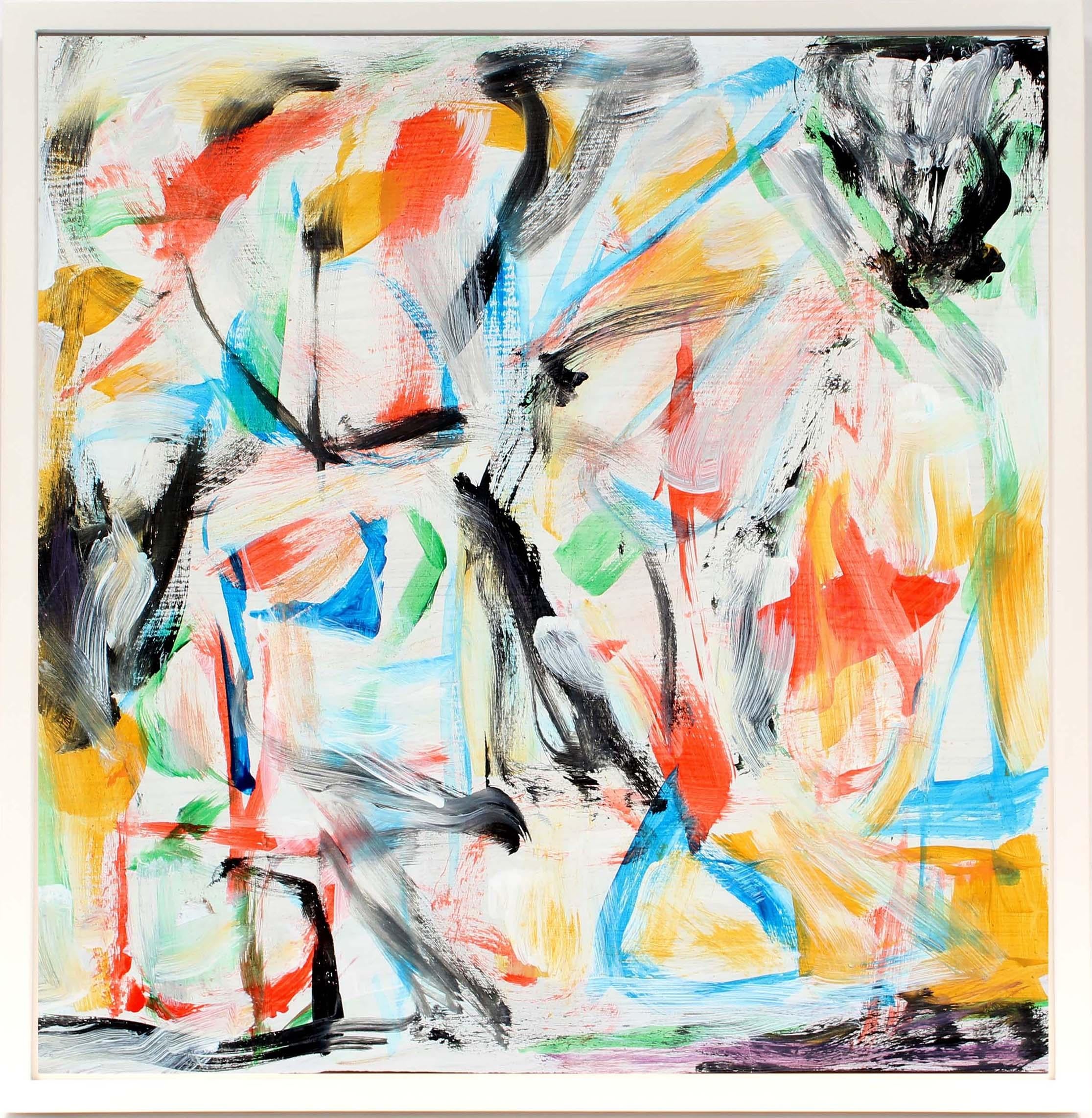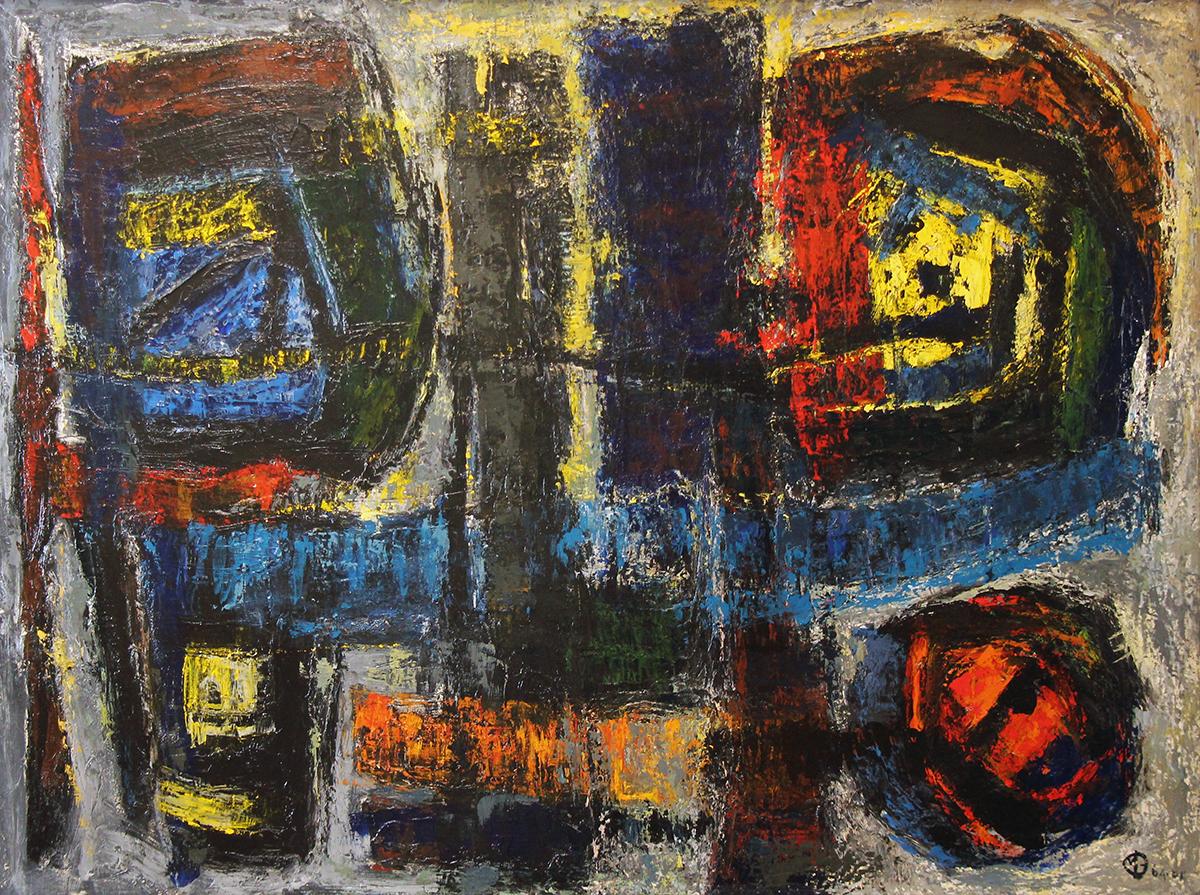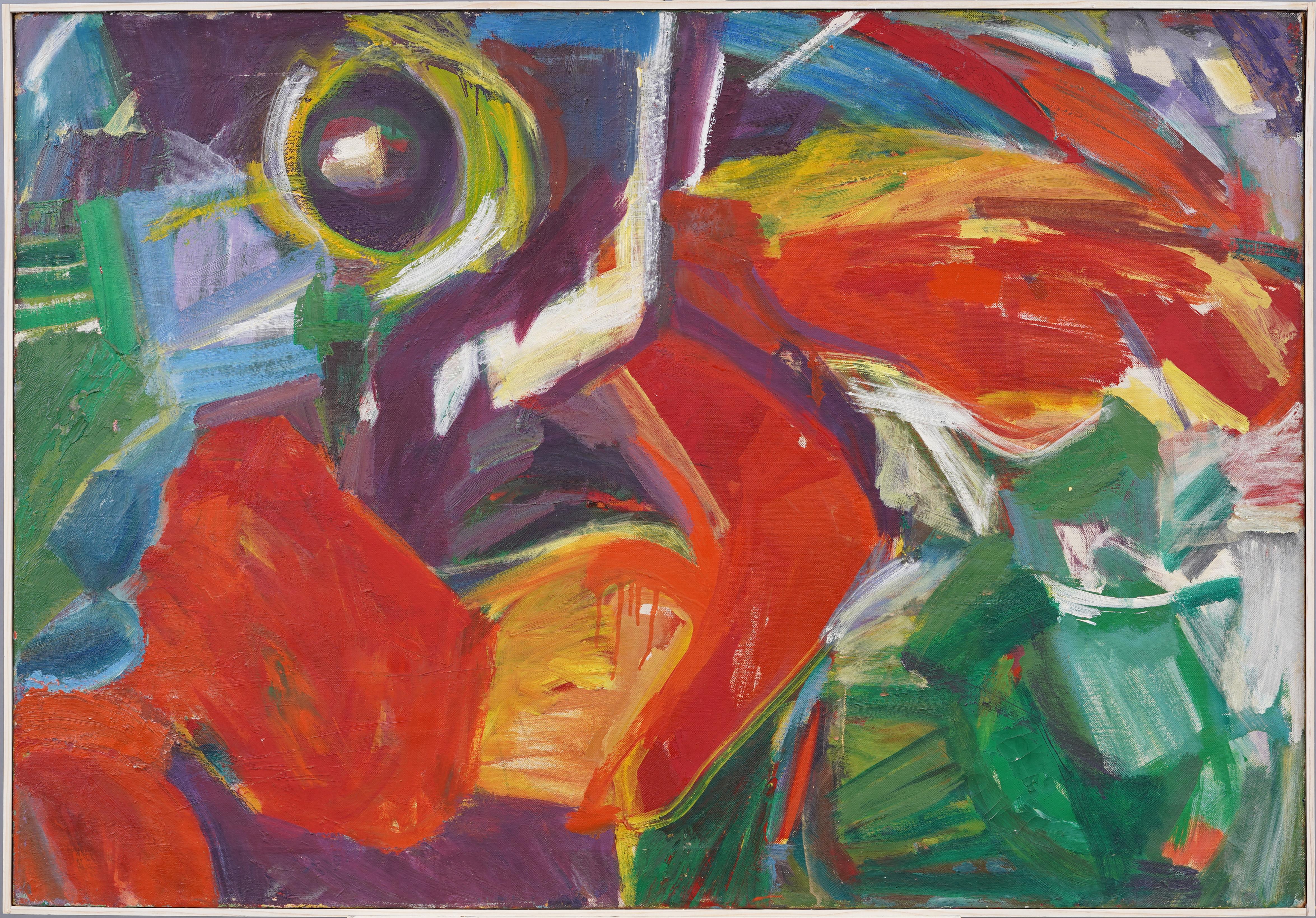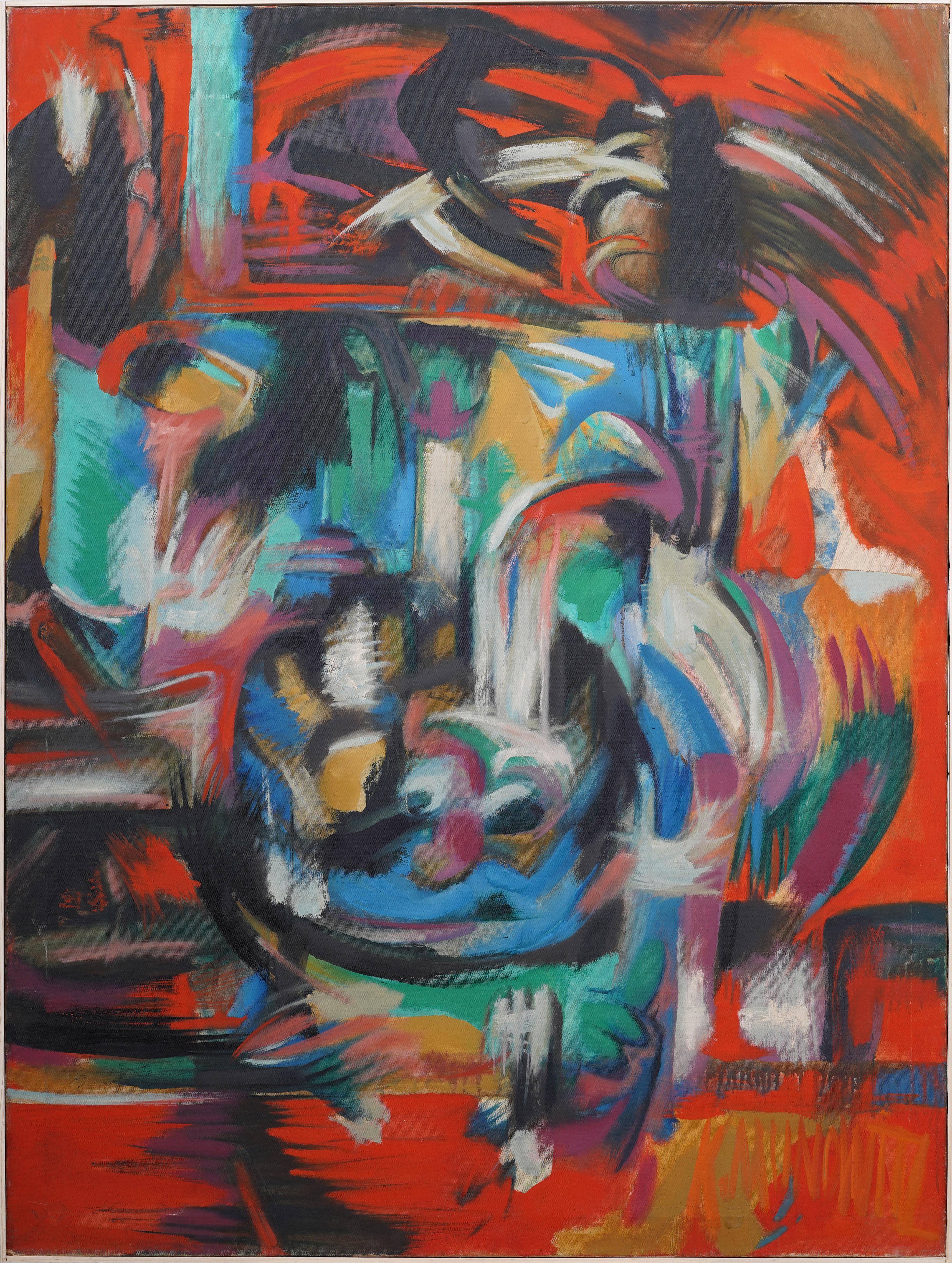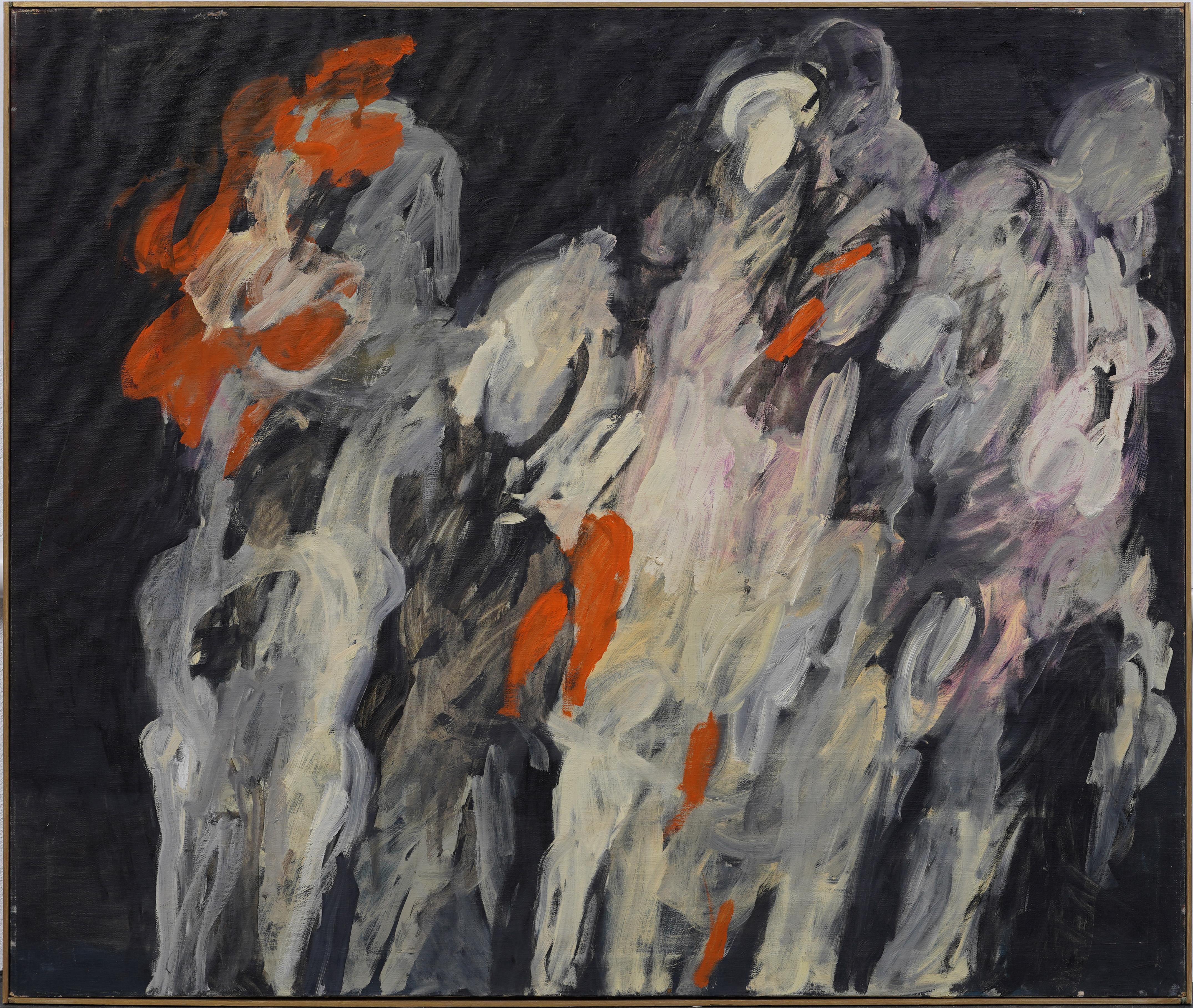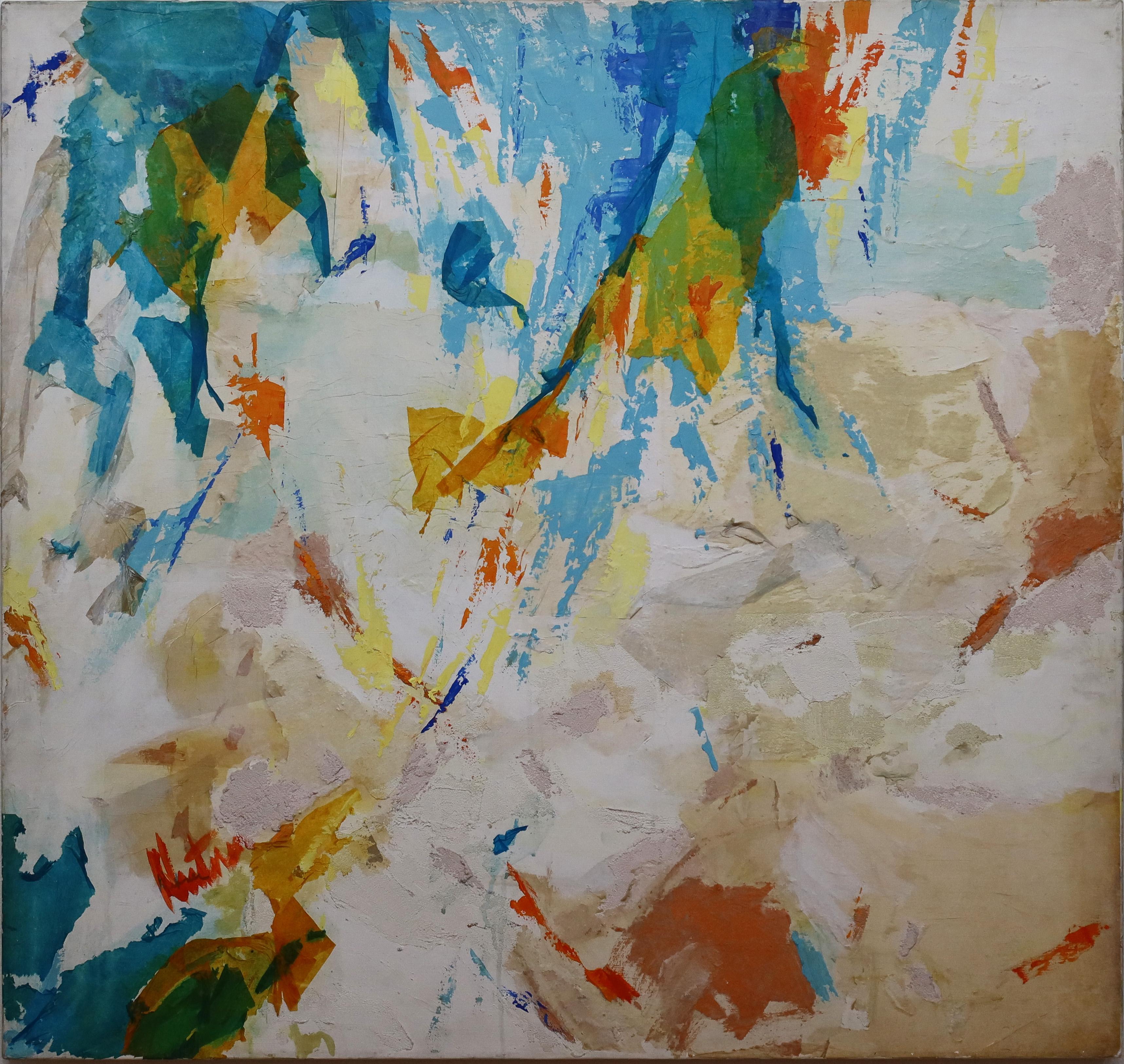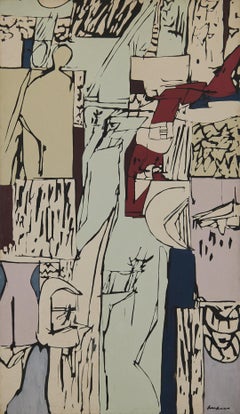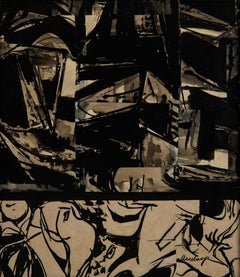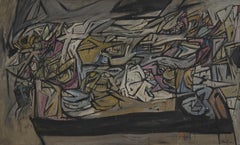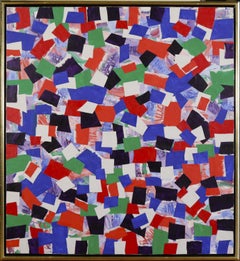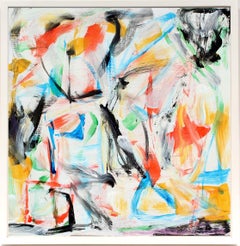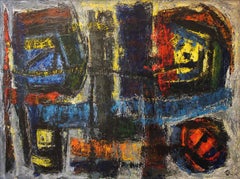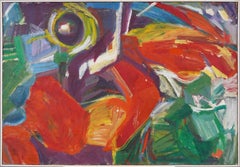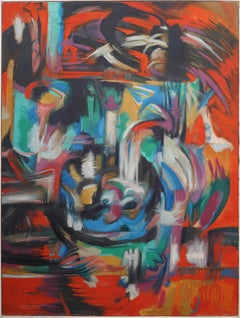Items Similar to Large 20th century abstract painting by contemporary Ohio artist, 3.5 x 4.5 feet
Want more images or videos?
Request additional images or videos from the seller
1 of 7
James LeporeLarge 20th century abstract painting by contemporary Ohio artist, 3.5 x 4.5 feet1962
1962
$5,000
£3,770.50
€4,360.76
CA$7,014.97
A$7,797.58
CHF 4,087.32
MX$95,227.30
NOK 51,027.88
SEK 48,007.71
DKK 32,547.45
About the Item
James Lepore (American, 1931-2024)
Untitled (Abstract), 1962
Oil on canvas
Signed Lepore 62 lower right
43 x 55 inches
James Lepore was an American artist active in Ohio. Lepore was a professor of Painting and Art History at Youngstown State University in Ohio.
Craquelure commensurate with age. Please reach out for additional photos.
About the Seller
5.0
Platinum Seller
Premium sellers with a 4.7+ rating and 24-hour response times
Established in 1975
1stDibs seller since 2022
37 sales on 1stDibs
Typical response time: <1 hour
- ShippingRetrieving quote...Shipping from: Beachwood, OH
- Return Policy
Authenticity Guarantee
In the unlikely event there’s an issue with an item’s authenticity, contact us within 1 year for a full refund. DetailsMoney-Back Guarantee
If your item is not as described, is damaged in transit, or does not arrive, contact us within 7 days for a full refund. Details24-Hour Cancellation
You have a 24-hour grace period in which to reconsider your purchase, with no questions asked.Vetted Professional Sellers
Our world-class sellers must adhere to strict standards for service and quality, maintaining the integrity of our listings.Price-Match Guarantee
If you find that a seller listed the same item for a lower price elsewhere, we’ll match it.Trusted Global Delivery
Our best-in-class carrier network provides specialized shipping options worldwide, including custom delivery.More From This Seller
View AllLarge Abstract Expressionist Mid-Century Acrylic Painting, Cleveland School
By Richard Andres
Located in Beachwood, OH
Richard Andres (American, 1927–2013)
Untitled, 1968
acrylic on canvas
signed lower right, signed and titled verso
88.5 x 50.5 inches
Has an indent and a tear in the canvas. See phot...
Category
1960s Abstract Expressionist Abstract Paintings
Materials
Acrylic
Untitled abstract expressionist oil painting by Cleveland School artist
By Richard Andres
Located in Beachwood, OH
Richard Andres
American, 1927-2013
Untitled, c. 1984
acrylic and ink on paper mounted on canvas
signed lower right
19 x 16 inches
Richard Andres was born in Buffalo, New York in 192...
Category
1980s Abstract Expressionist Abstract Paintings
Materials
Ink, Acrylic
S. F. L. Large Abstract Expressionist Mid Century Oil Painting, Cleveland School
By Richard Andres
Located in Beachwood, OH
Richard Andres (American, 1927–2013)
S. F. L., 1955
oil on canvas
signed lower right, signed and titled verso
42 x 70 inches
Richard Andres was born in Buffalo, New York in 1927. A ...
Category
1950s Abstract Expressionist Abstract Paintings
Materials
Oil
Colorful abstract acrylic collage 20th century painting, New York artist
By Joseph Glasco
Located in Beachwood, OH
Joseph Glasco (American, 1925-1996)
Untitled
1978-81
Acrylic on canvas collage
initialed verso and dated ‘81
48 x 51 inches
Joseph Glasco was born in Paul’s Valley, Oklahoma and gre...
Category
1980s Abstract Expressionist Abstract Paintings
Materials
Acrylic
L. S. F. vibrant abstract expressionist painting by Cleveland School artist
By Richard Andres
Located in Beachwood, OH
Richard Andres
American, 1927-2013
L. S. F., 1980
acrylic and ink on paper mounted on canvas
signed lower right, dated and titled verso
48 x 65 inches
48.75 x 65.75 inches, framed
R...
Category
1980s Abstract Expressionist Abstract Paintings
Materials
Ink, Acrylic
Untitled abstract expressionist oil painting by Cleveland School artist
By Richard Andres
Located in Beachwood, OH
Richard Andres
American, 1927-2013
Untitled, c. 1980
acrylic and ink on paper mounted on canvas
30 x 34 inches
Richard Andres was born in Buffalo, New York in 1927. A graduate of th...
Category
1980s Abstract Expressionist Abstract Paintings
Materials
Ink, Acrylic
You May Also Like
Abstract Expressionist Painting American 1960's Mid Century New York Colorful
Located in Buffalo, NY
Mid Century Modern, American Abstract Expressionist Painting on Masonite.
This wonderful work in exciting colors is housed in a contemporary white wood frame presentation..
The art...
Category
1960s Abstract Expressionist Abstract Paintings
Materials
Masonite, Acrylic
$340 Sale Price
20% Off
Expressionist Abstract #4, multi colored, Philadelphia artist, signed
By Morris Lewis Blackman
Located in Doylestown, PA
"Expressionist Abstract #4" is a 46 x 62 inches oil on board work by Philadelphia artist Morris Lewis Blackman. The painting is signed in the artist's monogram "MLB" and dated 1964-6...
Category
1960s Abstract Abstract Paintings
Materials
Oil, Board
Antique American Abstract Expressionist Large Framed New York City Oil Painting
Located in Buffalo, NY
Nicely painted mid century abstract oil painting. Great color. Framed.
Category
1940s Abstract Expressionist Abstract Paintings
Materials
Canvas, Oil
$780 Sale Price
20% Off
Important and Large Antique American Abstract Expressionist Framed Oil Painting
Located in Buffalo, NY
Nicely painted mid century abstract oil painting by Ken Munowitz. Oil on canvas. Framed.
Category
1950s Abstract Expressionist Abstract Paintings
Materials
Canvas, Oil
Antique American Modernist Abstract Expressionist Large Framed Oil Painting
Located in Buffalo, NY
Impressive early American modernist abstract expressionist oil painting. Framed. Oil on canvas.
Category
1960s Abstract Abstract Paintings
Materials
Canvas, Oil
$1,980 Sale Price
20% Off
Large Scale Antique American Abstract Expressionist Signed Original Oil Painting
Located in Buffalo, NY
Antique American modernist abstract oil painting. Oil on canvas. Signed.
Category
1950s Abstract Abstract Paintings
Materials
Canvas, Oil
$1,996 Sale Price
20% Off
